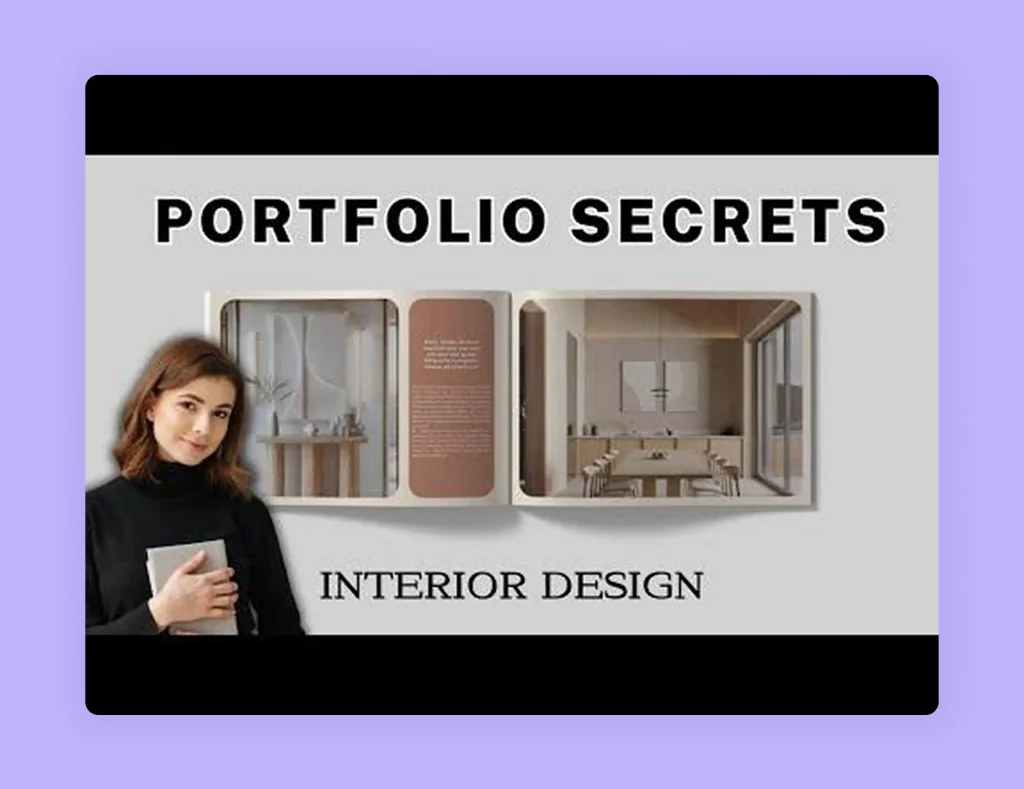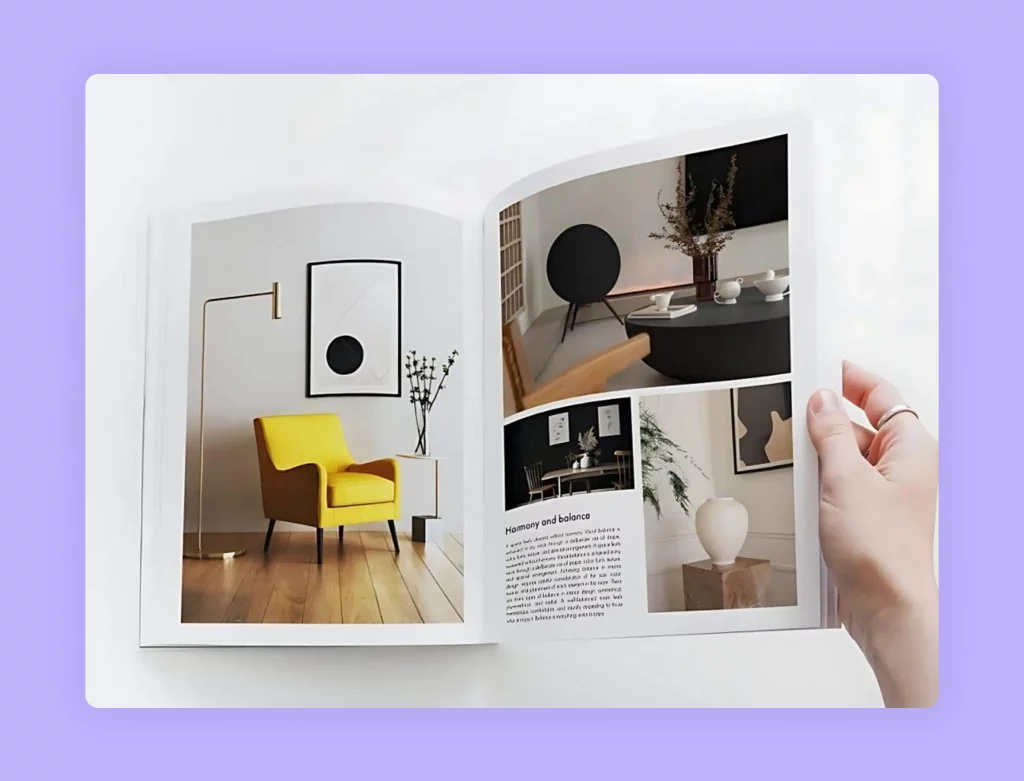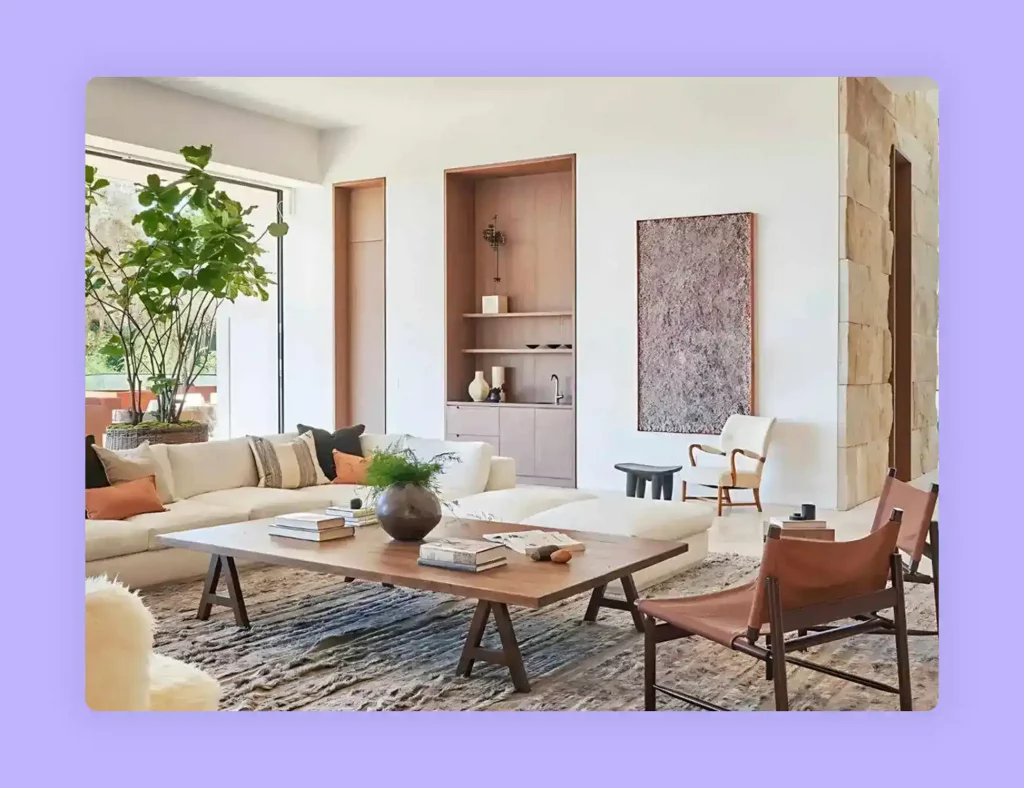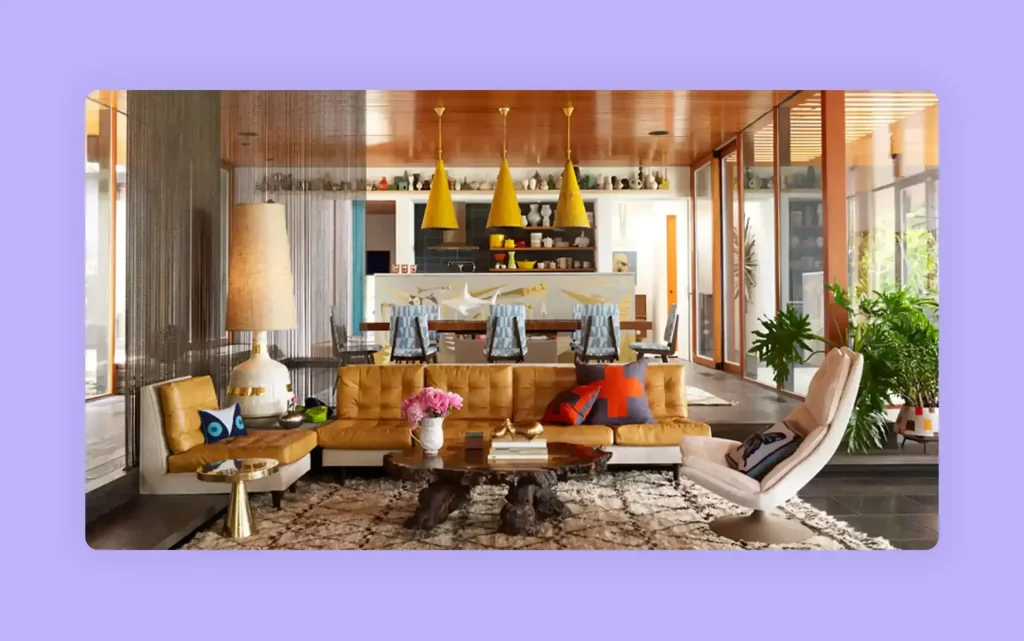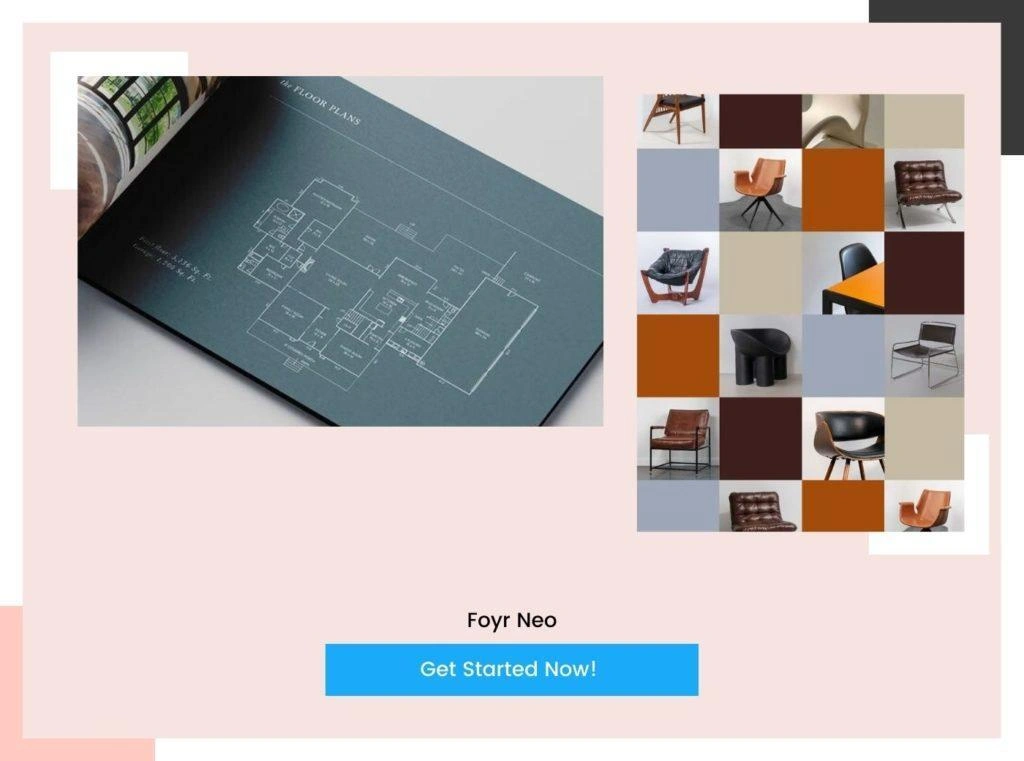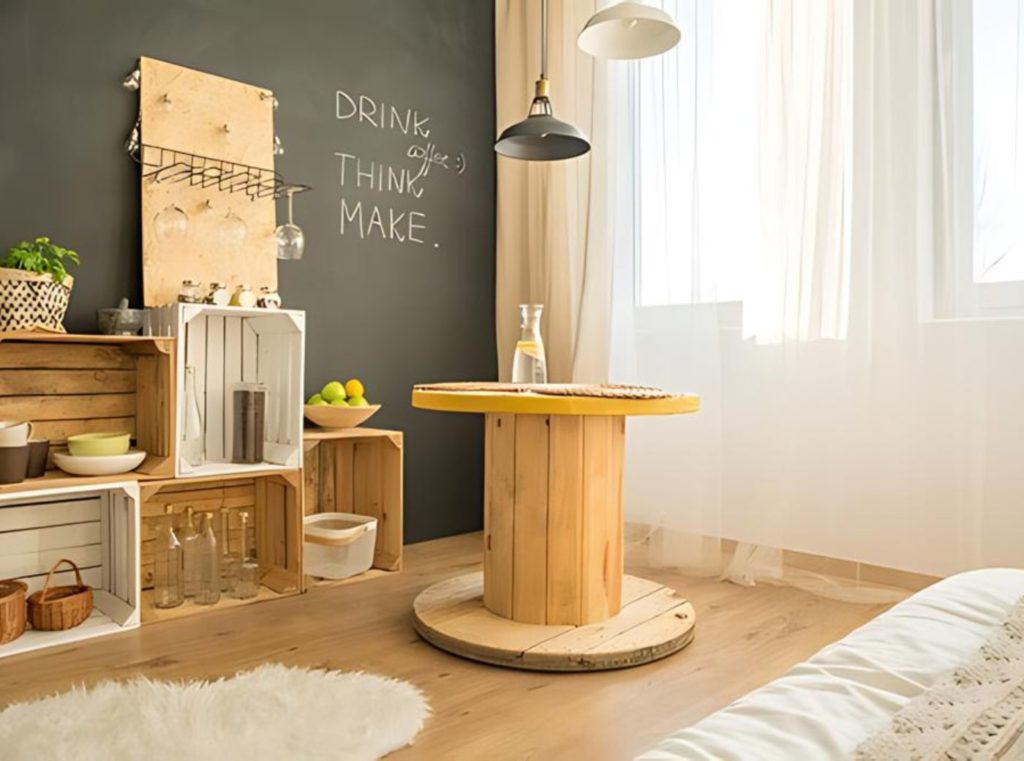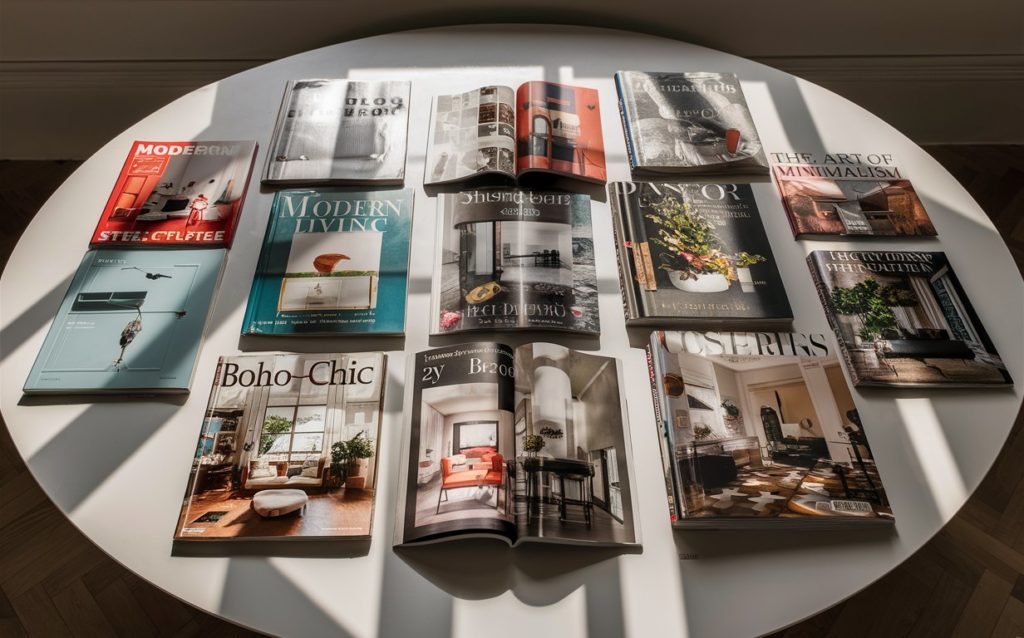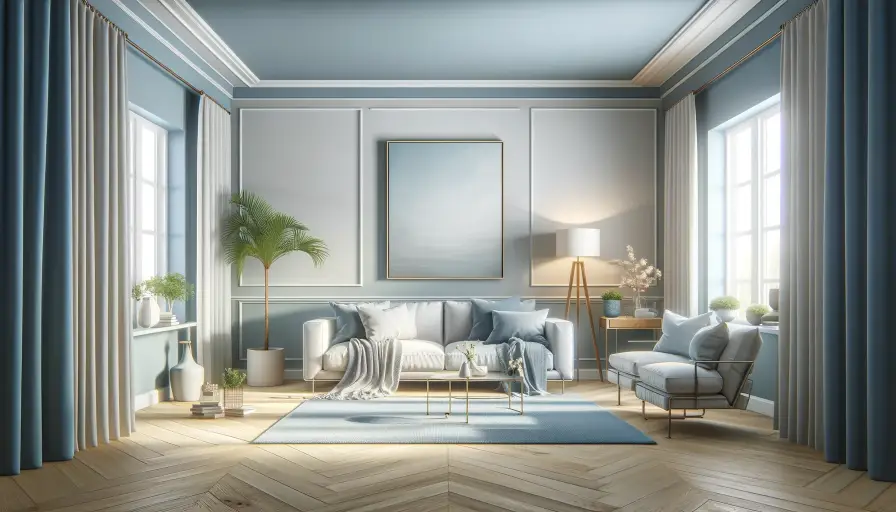Learn » Interior Design Concepts »
As an interior designer, your portfolio is your calling card, your visual resume, and often the first impression you make on potential clients or employers. It’s not just a collection of your best work; it’s a carefully curated showcase that tells your unique design story. Whether you’re an aspiring designer breaking into the industry or an established professional looking to refresh your portfolio, creating a compelling portfolio is essential for success in the competitive world of interior design.
In this blog, we’ll guide you on >how to create an interior design portfolio > that highlights your skills, creativity, and professional approach. We’ll also explore examples of successful portfolios and share insights from industry professionals to inspire and inform your journey.
What Is an Interior Design Portfolio?
An interior design portfolio is a curated collection of your work that showcases your skills, style, and experience to potential clients and employers. It is a visual narrative that demonstrates your design philosophy, process, and capabilities.
A portfolio can include everything from sketches, mood boards, and 3D renderings to high-quality photographs of finished projects. It serves as proof of your talent and is the most critical marketing tool for an interior designer.
Why Is a Strong Interior Design Portfolio Important?
A well-crafted portfolio serves multiple purposes:
- Demonstrates Your Style and Expertise: It showcases your design aesthetic, technical skills, and versatility.
- Builds Credibility: A professional portfolio establishes trust with clients and employers.
- Communicates Your Value: It highlights how you approach projects, solve problems, and deliver results.
- Differentiates You from Competitors: A unique portfolio sets you apart in a crowded market.
As renowned interior designer Kelly Wearstler says:
“Your portfolio is a window into your creative soul.”
What Should Your Interior Design Portfolio Include?
A comprehensive interior design portfolio should be a well-rounded representation of your abilities. Key elements to include are a personal introduction, a curated selection of your best projects, and details about your design process.
For each project, present a clear brief, your specific role, concept development materials like sketches and mood boards, and high-resolution images of the final outcome.
Including your resume, client testimonials, and any awards or recognition will further strengthen your presentation and build credibility with potential clients or employers.
10 Steps to Create a Successful Interior Design Portfolio
Wondering >how to create an interior design portfolio >? Here is a step-wise guide you should follow:
1. Define Your Brand and Audience
Before assembling your portfolio, you must define your unique position in the market.
- Identify Your Unique Design Style and Strengths: Reflect on your unique aesthetic. Are you known for modern minimalism, bold eclecticism, or sustainable interior design? This should be evident in your branding and project selection.
- Know Your Target Audience: Are you targeting residential, commercial, or hospitality clients? Tailor your portfolio’s content to resonate with their specific needs and interests.
2. Curate Your Best Work
The projects you choose are the foundation of your portfolio.
- Focus on Quality Over Quantity: Select >specific projects t >hat highlight the quality and impact of your work.
- Showcase Versatility: Include a range of projects to demonstrate your ability to work across different styles and project types.
- Include Before-and-After Photos: This is a powerful way to visually demonstrate the transformation and impact of your design work.
3. Tell a Story with Each Project
Frame each project as a compelling narrative.
- Provide a Clear Project Overview: Briefly describe the client’s needs, the project’s objectives, and your specific role and responsibilities.
- Explain Your Design Process: Share insights into your inspiration, your approach, and any challenges you faced and how you overcame them.
- Highlight the Results: Showcase the final outcome with high-quality visuals and, where possible, quantify your success (e.g., improved client satisfaction).
Example:
Project: Modern Loft Renovation
- Overview: Transforming an industrial loft into a cozy living space.
- Role: Lead designer responsible for concept, layout, and material selection.
- Challenge: Balancing industrial elements with warmth and comfort.
- Solution: Incorporated reclaimed wood, soft textiles, and strategic lighting.
Client Testimonial:
‘Hoeft Design Build, a trusted voice in the design-build industry, describes Foyr Neo as the premiere tool for design-build contractors. Their feature highlights how Foyr Neo streamlines the design-build workflow.’ – Luke Hoeft
Read the Full Article – Why Hoeft Design Build Recommends Foyr Neo
4. Use High-Quality Visuals
The visual quality of your portfolio is paramount.
- Invest in Professional Photography: This is essential for capturing the details, craftsmanship, and essence of your finished designs.
- Include a Variety of Visuals: Beyond professional photos, showcase renderings, sketches, mood boards, concept boards, and technical drawings to illustrate your process.
- Showcase Technical Expertise: Include floor plans, elevations, and other technical drawings to demonstrate your proficiency in space planning and design.
- Ensure High-Resolution Images: All visuals must be high-resolution, well-lit, and thoughtfully composed.
Tip: Before-and-after photos can be powerful in demonstrating transformation.
5. Add Table of Contents and Organize Your Design Samples
A table of contents and logical organization are crucial for a professional look. A clean design with easy navigation allows your work to shine without distraction. Organize your projects logically, either chronologically to show your growth or by project type (e.g., residential, commercial) to showcase your range. Use consistent fonts, colors, and formatting throughout to create a cohesive and visually appealing experience for the viewer.
6. Include Digital Elements in Your Interior Design Portfolio
Leverage technology to make your portfolio more engaging. This will help create a beautiful interior design portfolio that stands out:
- Interactive PDFs: Create a digital portfolio with clickable links and interactive elements.
- Online Portfolio or Website: Platforms like Behance, Wix, or your own website allow easy sharing, while software like Foyr Neo can add 3D renderings and virtual tours for an immersive experience.
- Virtual Tours: Include 3D renderings or virtual walk-throughs for an immersive experience.
How Foyr Helps with Digital Portfolio Design?
Software like Foyr can transform how you build an interior design portfolio by adding photorealistic 3D renderings and virtual tours. This allows you to bring your designs to life, offering clients an immersive experience that static images cannot match. With Foyr AI interior design generator, you can quickly create stunning visuals, demonstrate your vision with clarity, and share your digital portfolio effortlessly.
7. Include Your Resume and Past Client Work Samples
Including your resume provides a quick, professional summary of your qualifications, experience, and education. It adds a layer of credibility and gives potential employers or clients a clear overview of your background without needing a separate document. Placing it at the beginning or end of your portfolio ensures all your professional information is consolidated in one place.
Quote from Designer Emily Henderson:
‘An online presence is no longer optional; it’s essential.’
8. Build Trust and Credibility
Your portfolio should build confidence with potential clients.
- Include Client Testimonials: Short quotes or reviews that highlight client satisfaction can significantly add credibility.
- Mention Awards and Recognition: Include any press features, awards, or other professional recognition you have received.
- Showcase Your Personality: Consider adding a brief bio or other personal touches to help clients connect with you.
- Provide Your Contact Information: Make it easy for potential clients or employers to reach you.
9. Show Your Process of Interior Design
Demonstrate how you think and develop your ideas.
- Include Development Materials: Show how you translate client needs into functional spaces by including sketches, mood boards, and concept development materials.
- Display Material Selections: Share fabric swatches, color palettes, and other material selections to give insight into your tactile design choices.
10. Prepare Your Interior Design Portfolio in Different Formats
Versatility is important when presenting your work.
- Digital Version: For online sharing via email or your website.
- Print Version: A high-quality printed portfolio for in-person meetings.
Why is this important? Having a printed as well as a digital version of your portfolio ensures you are prepared for any situation, from a quick email submission to a formal in-person presentation. A digital portfolio offers accessibility and the ability to include interactive elements, while a physical portfolio provides a tactile, high-impact experience in face-to-face meetings.
Best Examples of Interior Design Portfolio
Let’s have a look at some of the best examples of interior design portfolios from leading professionals:
- Studio McGee
Image Credit: studio-mcgee.com
Founded by Shea and Syd McGee, Studio McGee’s portfolio is a masterclass in branding and presentation.
- Visual Consistency: Crisp, bright images that reflect their signature style.
- Storytelling: Each project includes a narrative that connects with clients.
- Accessibility: An easy-to-navigate website with high-quality visuals.
- Jonathan Adler
Image Credit: Jonathanadler.com
Jonathan Adler’s portfolio showcases his eclectic and bold designs.
- Vibrant Imagery: High-resolution photos that capture his unique aesthetic.
- Personal Touch: Insights into his inspiration and design philosophy.
- Diverse Projects: From residential to commercial, demonstrating versatility.
- Kelly Wearstler
Image Credit: kellywearstler.com
An iconic figure in interior design, Kelly Wearstler’s portfolio is both artful and informative.
- Artistic Presentation: Blends photography with graphic elements.
- Comprehensive: Includes hospitality, residential, commercial, and product design.
- Process Highlights: Shares sketches and behind-the-scenes glimpses.
Interior Design Portfolio Best Practices to Follow
Learning >how to make a good portfolio for interior design > requires you to follow the essential tips and best practices:
- Be Authentic: Let your unique personality and style shine through in your project selections and presentation.
- Pay Attention to Detail: The precision in your portfolio reflects the attention to detail you will bring to a project.
- Keep It Updated: Regularly add new projects and remove outdated ones to show your evolving skills.
- Avoid Overloading: Be selective and feature only your best work. Too many types of projects can overwhelm the viewer.
- Maintain Focus: A scattered portfolio dilutes your brand. Ensure your selections are coherent and tell a consistent story.
- Tailor to Your Audience: Customize your portfolio to appeal directly to the clients or employers you want to attract.
Create Your Interior Design Portfolio with Foyr
Creating a successful interior design portfolio is a thoughtful process of curating a visual story that represents who you are as a designer. By focusing on quality, authenticity, and professionalism, you can create a portfolio that effectively showcases your talents and opens doors to new opportunities.
Foyr empowers you to elevate your portfolio from a simple collection of images to an immersive digital experience. With our comprehensive interior design software, you can generate high-quality 3D renderings, virtual tours, and detailed floor plans that will captivate clients. Streamline the process of how to create a interior design portfolio and present your work with the professionalism it deserves with Foyr.
Sign up for a free 14-day trial today and start creating your interior design portfolio.
Frequently Asked Questions
How do I build my own design portfolio with Foyr?
To build your portfolio with Foyr Neo, start by transforming your 2D floor plans into 3D models. From there, you can apply textures, add furniture from a vast library, and set up realistic lighting. Use the platform to generate photorealistic 12K renderings and 360° virtual tours of your designs. Export these high-quality visuals and add them to your digital or print portfolio to give clients an immersive view of your capabilities.
Do interior designers need a portfolio?
Yes, absolutely. For an interior designer, a portfolio is the single most important tool for securing clients and jobs. It’s a visual resume that provides concrete proof of your skills, design aesthetic, and professional experience. It moves beyond words to show potential clients exactly what you can do for them, making it an essential element for building a career in the industry.
How long should a portfolio be in interior design?
An interior design portfolio should prioritize quality over quantity. A good rule of thumb is to include between 8 and 12 of your best and most relevant projects. This is enough to showcase your range, skills, and unique style without overwhelming the viewer. Each project should be presented in detail, telling a complete story from concept to completion, typically spanning 2-4 pages per project.
Should I create an interior design portfolio in A3 or A4?
The choice between A3 and A4 paper sizes depends on the context. A3 is larger and more impactful, making it ideal for formal, in-person presentations where you want your visuals to command attention. A4 is more practical and portable, suitable for mailing, leaving behind after meetings, or for smaller, more intimate presentations. Many designers maintain a primary A3 portfolio and have A4 copies or a digital version available as well.

Nichole Samuel
Interior Designer
Blog Reviewed By





